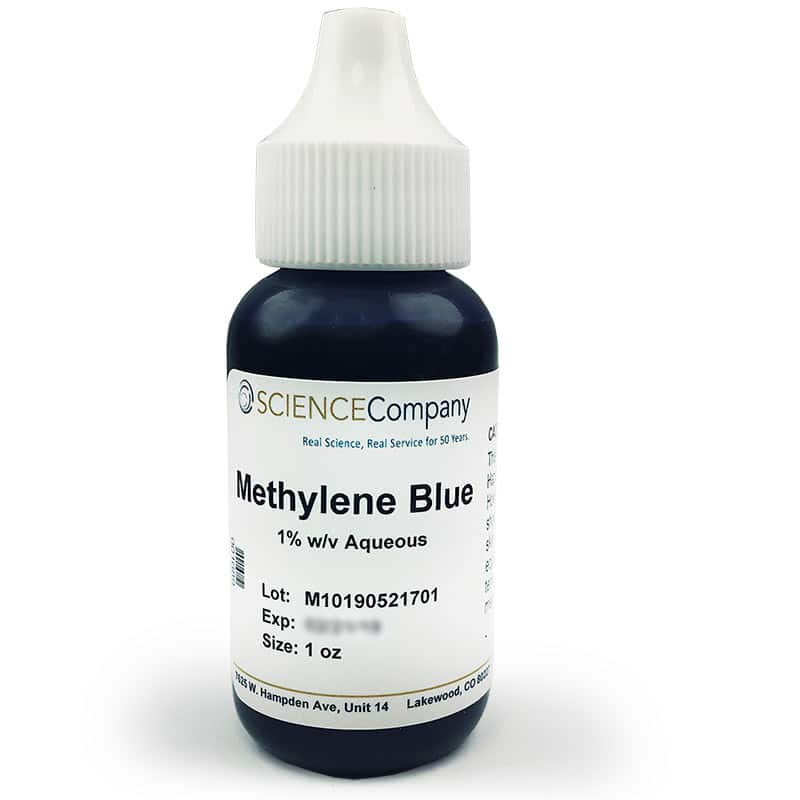The Many Clinical Uses of Methylene Blue
The Many Clinical Uses of Methylene Blue
June 27th, 2023
Samual Abiola
Pharm.D. Candidate 2024
Philadelphia College of Pharmacy
Methylene blue was first developed as a dye in 1876 and was the first fully synthetic drug used in medicine. However, in recent times methylene blue may have a wide array of clinical uses that can greatly positively affect the lives of patients with various disease states.

The uses of methylene blue come from its effect on mitochondria in the cells. Mitochondria are the driving force of energy metabolism as they generate energy from the food we eat to create a molecule called adenosine triphosphate in a process called oxidative phosphorylation. Oxidative phosphorylation works through the electron transport chain. The electron transport chain is a series of protein complexes that transfer electrons from electron donors to electron acceptors in a process known as redox reactions. These redox reactions are coupled with the transfer of protons across a membrane1. Methylene blue has what has been termed by toxicologists as hormesis. Hormesis refers to biphasic dose response of certain where the agent produces a beneficial effect at low doses and a detrimental effect at higher doses. Low dose methylene blue helps substitute electrons that are normally derived by oxygen and thus drive the electron transport chain and cause the mitochondria to work more efficiently and reduce oxidative stress. However, methylene blue at higher doses can take electrons away from the protein complexes of the electron transport chain, which decreases mitochondrial efficiency and ATP production. The ability of low dose methylene blue to help mitochondria function more efficiently and reduce oxidative stress may have the capacity to help people with various ailments.

Methylene blue has the potential to be a good treatment for Alzheimer`s disease. Methylene blue can improve Alzheimer`s symptoms by a combination of diverse functions. The pathological effects of Alzheimer`s include amyloid plaques(aggregates of the amyloid protein in the gray matter of the brain) and neurofibrillary tangles. Neurofibrillary tangles are caused by the accumulation of a protein called Tau inside nerve cells in the brain. Clinical symptoms of Alzheimer’s are more correlated with Tau protein than with amyloid plaques. Methylene blue can decrease tau formation through its effect on mitochondria which should improve and/or delay clinical symptoms of Alzheimer`s disease.
Methylene blue has the potential to be a good treatment for Alzheimer`s disease. Methylene blue can improve Alzheimer`s symptoms by a combination of diverse functions. The pathological effects of Alzheimer`s include amyloid plaques(aggregates of the amyloid protein in the gray matter of the brain) and neurofibrillary tangles. Neurofibrillary tangles are caused by the accumulation of a protein called Tau inside nerve cells in the brain. Clinical symptoms of Alzheimer’s are more correlated with Tau protein than with amyloid plaques. Methylene blue can decrease tau formation through its effect on mitochondria which should improve and/or delay clinical symptoms of Alzheimer`s disease.
Methylene blue also has promise in treating long-COVID symptoms. Methylene blue has anti-inflammatory properties against the inflammatory cytokines that are released in the immune response to the COVID infection. Its anti-inflammatory effects appear to be mediated by inhibiting the macrophage NLRP3 inflammasome complexes which greatly reduces the number of inflammatory cytokines that can cause damage to bodily organs. COVID can cause stress on cells and lead to free radical formation through oxidative stress on the mitochondria during energy formation. Free radical formation can lead to chronic inflammation that is often seen in COVID patients. Methylene blue also reduces oxidative stress that comes from free radical formation by improving the effectiveness of mitochondria. This should relieve some of the chronic inflammation that often plague many COVID patients.
Methylene blue may also help people suffering from chronic pain, particularly in its formulation as an oral rinse solution. Methylene blue can reduce pain through various mechanisms. The structural composition of methylene blue appears to affect different levels of nociceptive(pain receptors) pathways. Methylene blue also has advantages over other oral rinses that are used in the treatment of pain because many oral rinses for pain have the side effect of local anesthesia that manifests as a sensation of numbness in the mouth. This can lead to patient noncompliance with medication as the numbness in the mouth can alter the taste of meals. However, methylene blue does not cause local anesthesia so the patient will not experience the feeling of numbness inside the mouth. This will likely lead to better patient adherence to patients taking methylene blue as opposed to other oral rinses used for pain. This makes methylene blue a good choice for patients suffering from chronic pain.
Methylene blue may be compounded in various dosage forms but the most commons is capsule form. According to the literature, the average dosing of methylene blue is 0.5-4mg/kg. Anything above 5mg/kg is considered toxic. Low dose methylene blue that has the best therapeutic effects is usually dosed in the range of 10-30mg daily. However, the optimal dose is highly individualized and each patient should work with healthcare providers to find the right dose for them. It is also important to understand the difference between the USP grade of methylene blue and other grades. The USP allows impurities up to< 0.5% in methylene blue formulations. Impurities can contain potentially toxic metals like arsenic, mercury, lead etc. However, many industrial formulations of methylene blue can have impurities that can exceed 10%. This can be dangerous if potentially toxic substances are in these impurities. Impurities are also another reason as to why low doses of methylene blue are preferred to higher doses because the risk of impurities increases as the dose of methylene blue increases. Compounding of methylene blue should only be formulated using USP grade.
Although it`s an old medication, MB could be potentially groundbreaking in treatments of various diseases. The future of many people suffering from diseases may be much brighter with methylene blue.
References:
- Lyall, Fiona (2010). "Biochemistry". Basic Science in Obstetrics and Gynaecology. pp. 143-171. doi:10.1016/B978-0-443-10281-3.00013-0. ISBN 978-0-443-10281-3.
- Methylene Blue Stain, 1 oz. Methylene blue stain, 1 oz. (n.d.). https://www.sciencecompany.com/Methylene-Blue-Stain-1-oz-P6365
- Mukherjee, S. (2023, February 2). Electron transport chain: Definition, steps, and diagram. Science Facts. https://www.sciencefacts.net/electron-transport-chain.html
- The Many Uses of Methylene Blue. (n.d.). PCCA. Retrieved June 14, 2023, from https://www.pccarx.com/Resources/VOD/LiveWebinars/ProductWebinar/2023/April.

Comments